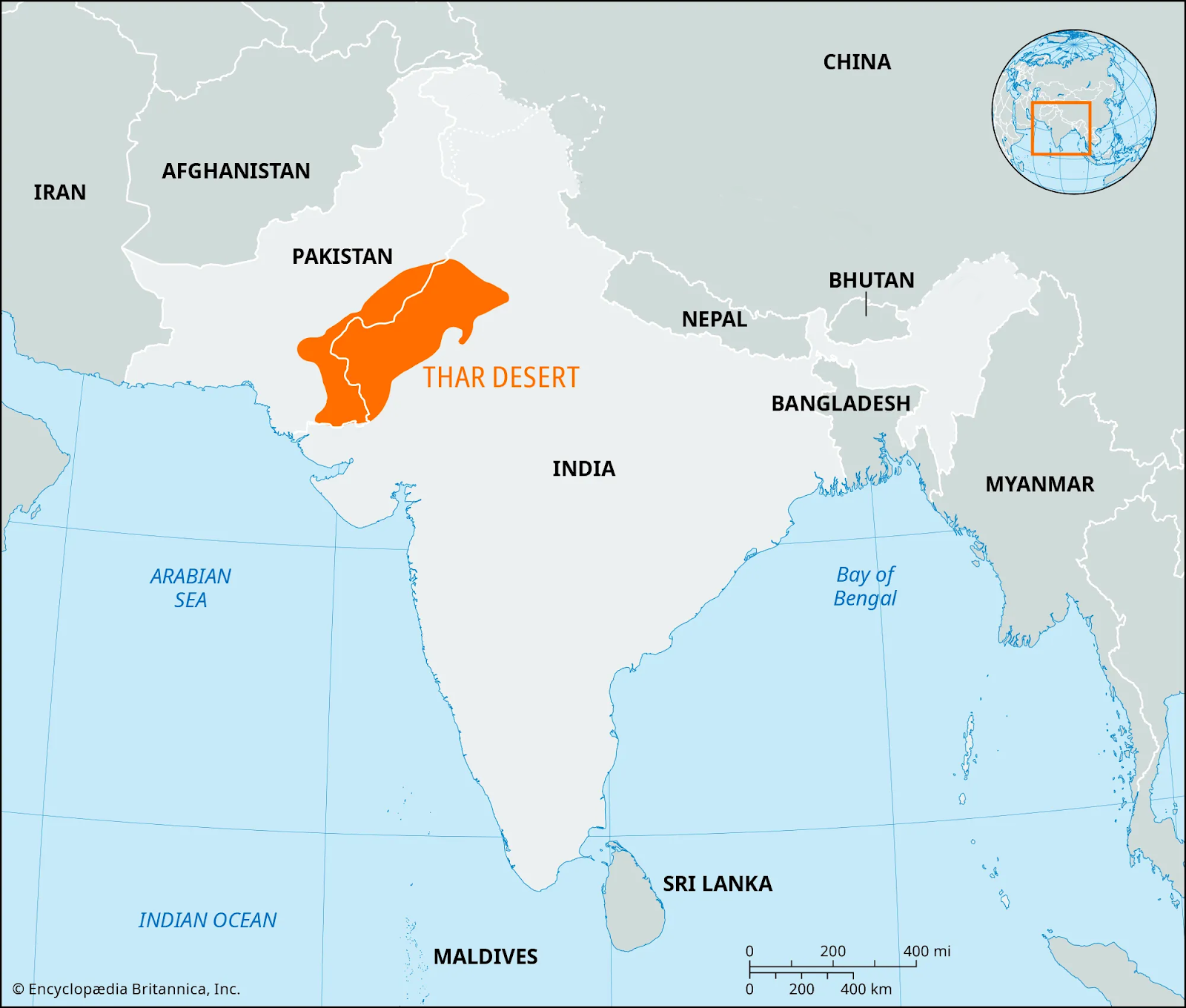Thar Desert | 15 Apr 2025
Why in News?
According to a new study, India's Thar Desert has recorded an annual increase of 38% in greening per year during the last two decades due to increased monsoon rainfall and agricultural expansion.
Key Points
- About Thar Desert:
- Location of the Thar Desert (The Great Indian Desert): It is an arid region of sand hills on the Indian subcontinent. It covers an area of 200,000 square kilometers in northwestern India (Rajasthan, Gujarat, Punjab and Haryana) and southeastern Pakistan (Sindh and Punjab provinces).
- Geography and Climate: It is bordered by the Indus River plains to the west, the Punjab Plains to the north and northeast, the Aravalli Range to the southeast , and the Rann of Kutch to the south .
- This desert has a subtropical desert climate , with persistent high pressure and subsidence.
- Soil Structure: Desert soils include desert, red desert, sierozem, red and yellow , saline, lithosols and regosols.
- These soils are coarse textured, well drained and calcareous , which supports specific vegetation and agriculture.
- Biodiversity: It supports relatively rich biodiversity, including the Blue Bull (Nilgai), Blackbuck, Great Indian Bustard (GIB) and Indian Gazella (Chinkara).
- One of the largest national parks in India , the Desert National Park (Rajasthan) , is located here.
- Mineral Resources: It has one of the world's largest lignite coal deposits in the desert .
- It is rich in gypsum and salt ( with saline lakes- Sambhar and Kuchaman ).

